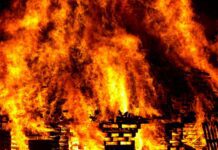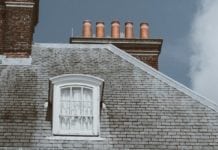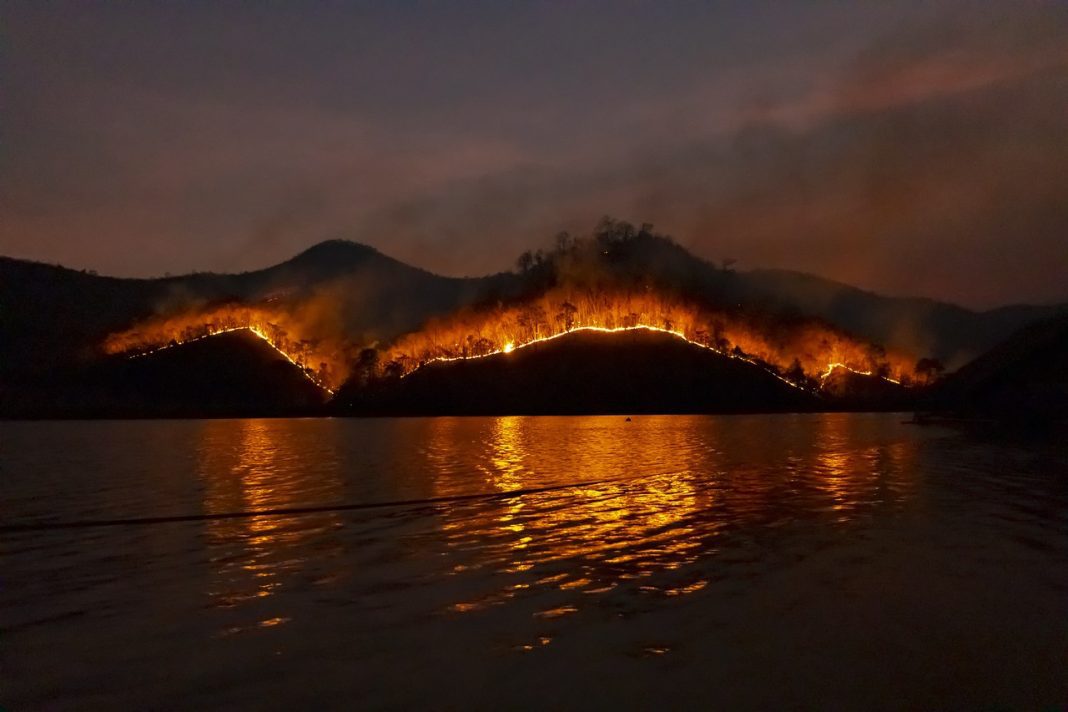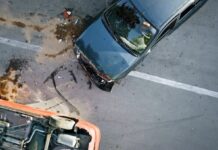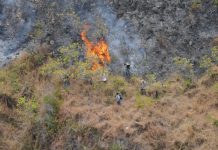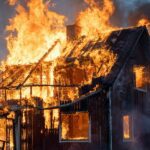Table of Contents - Jump Ahead:
We’ve assembled a chronological list of the names and a brief description of some of the largest & most destructive fires in US history. While it might look like a list of California wildfires, that’s because California is by far the state with the most and most destructive wildfires (source).
Annually, roughly 70,000 wildfires throughout the US burn approximately 5.8 million acres of land according to Carmen Ang of Visual Capitalist. As you read below, you’ll see that many fires start due to human carelessness, power lines, lightning and some intentionally set by arsonists.
List of the Most Destructive Fires in US History
- 2022 Oak Fire – The fire was reported on July 22, 2022, and burned 19,200 acres in Bootjack, California in Mariposa County near the Sierra National Forest. 2022 Oak Fire Video & News.
- 2021 Dixie Fire – What started as a a tree contacting a PG&E power line, turned into one of the largest and most expensive wildfires to contain in state history. The Dixie fire burned 963,000 acres in California. 1 killed, 1,311 structures destroyed and cost $637 million to suppress. 2021 Dixie Fire Video & News.
- 2020 August Complex Fire – A series of wildfires that began as lightning-caused fires in Mendocino National Forest in August 2020, it became California’s largest recorded wildfire in history at that time, and burned over 1.4 million acres. 2020 August Fire Video & News.
- 2020 Glass Fire – destroyed over 1,500 structures, damaged more than 100 structures, and killed 6 people.
- 2020 Oregon Wildfires – A series of wildfires that affected Oregon in the fall of 2020, it burned over 1 million acres and destroyed thousands of homes and buildings.
- 2018 Camp Fire – The deadliest and most destructive wildfire in California’s history, it killed 85 people and destroyed over 18,000 structures.
- 2018 Woolsey Fire – killed 3 people and destroyed more than 1,500 structures.
- 2017 Tubbs Fire – A wildfire that occurred in Northern California during the 2017 California wildfire season, it destroyed over 5,600 structures and killed 22 people.
- 2017 Thomas Fire – burned over 280,000 acres and destroyed more than 1,000 structures.
- 2016 Blue Cut Fire – destroyed more than 96,000 acres and damaged or destroyed more than 100 structures.
- 2015 Valley Fire – killed 4 people and destroyed more than 1,300 structures.
- 2015 Butte Fire – destroyed more than 549 structures and killed 2 people.
- 2013 Rim Fire – the third-largest wildfire in California history, burning over 257,000 acres.
- 2006 Esperanza Fire – The Esperanza Fire was caused by arson, but spread by wind that started on October 26, 2006 near Cabazon, California. It burned over 41,000 acres over the course of 4 days until October 30, 2006, when the fire was fully contained. Five firefighters died defending a vacant house, which ended up burning to the ground.
- 2003 Cedar Fire – the second-deadliest wildfire in California history, killing 15 people and destroying more than 2,800 structures.
- 2000 Cerro Grande Fire – A wildfire that occurred in Los Alamos, New Mexico, it destroyed over 400 homes and burned 47,650 acres of land.
- 1996 Buffalo Creek Fire – Pike National Forest in Colorado. A campfire left unattended and spread by fierce winds burned nearly 12,000 acres of the Pike National Forest and surrounding private lands, destroying 10 structures and costing $20+ million in suppression costs and property damage.
- 1991 Oakland Hills Fire – A wildfire that occurred in the Berkeley and Oakland Hills of Alameda County, California, it killed 25 people and destroyed over 3,000 homes and apartments.
Strategies to Fighting Wildfires
The best strategy to fight a wildfire depends on the specific circumstances of the fire, terrain and surrounding area, and the resources available. Some common strategies include creating firebreaks (areas where the fuel has been removed or cleared to prevent the fire from spreading), using water or foam to extinguish or contain the fire, and using controlled burns to remove fuel and create a barrier for the wildfire.
California has been heavily ridiculed and outright blamed for seemingly ignoring the forest management that would be needed through controlled burns or removal of overgrowth, dry & dead trees, leaves and debris (source 1, source 2). However, climate change and a drought & flood cycle play strong roles in this complex recipe.
What are the Best Ways to Protect Your Home or Business Against a Wildfire?
The absolute best way to protect your home or business against a wildfire is to remove fuel as much as possible.
- Create a defensible space around your home or business by removing dead vegetation and thinning out trees and bushes.
- Use fire-resistant landscaping like rocks and gravel, drought-tolerant plants like sage, lavender, and ice plant, trees with moist, green leaves like oaks, and avoid highly flammable species such as eucalyptus and pine.
- Install fire-resistant roofing and vents.
- Keep gutters and eaves clear of debris.
- Keep a garden hose or other means of extinguishing small fires on hand.
- Make sure your address is clearly visible from the street so that emergency responders can find your home quickly.
- Regularly maintain and clean your chimneys, wood stoves, and other combustion appliances.
- Have smoke detectors and fire alarms installed throughout your home and test them regularly.
- Stay informed about local wildfire conditions and be ready to take action with an escape plan if a wildfire threatens your area.

